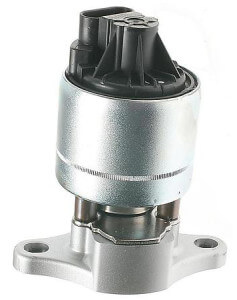EGR Readiness Monitor — How it works
Learn How the EGR Readiness Monitor Works
The Exhaust Gas Recirculation (EGR) system
reduces the formation of Oxides of Nitrogen during combustion by keeping combustion temperatures below 2500°F. The EGR system accomplishes the heat reduction by recirculating a small amounts of exhaust gas back into the intake manifold at cruising speeds, where it is mixed with the incoming air/fuel mixture. The EGR readiness monitor detects if the EGR system is operating properly and sets a trouble code if it doesn’t see the expected exhaust flow.
The EGR reduces combustion temperatures by up to 500°F. The ECM determines when, for how long, and how much exhaust gas is recirculated back to the intake manifold.
How the EGR Readiness Monitor works
The EGR monitor has several ways to check system operation. In most setups, the EGR valve has a position sensor that reports the current valve opening position to the ECM. The ECM compares the actual valve opening position to the commanded position and set a code if the two values don’t match.
In other system, a differential pressure feedback system is used to determine if the actual EGR flow matches what the ECM has commanded.
What goes wrong with the EGR valve
Since the EGR valve is recirculating exhaust gasses containing combustion byproducts like soot, oil, water and acids, those components can deposit on the valve seat or pintle, obstructing flow. Carbon residue buildup is a common cause of an EGR related trouble; code. A failed position sensor can also cause a trouble code. This code was very common on Chrysler products and is usually caused by a substandard sensor design.
The EGR Monitor performs EGR system function tests at preset times during vehicle operation.
The EGR Monitor is a “Two-Trip” Monitor. If a fault is found on the first trip, the computer temporarily saves the fault in its memory as a Pending Code. The computer does not command the MIL on at this time. If the fault is sensed again on the second trip, the computer commands the MIL “On,” and saves the code in its long-term memory.
©, 2022 Rick Muscoplat
Posted on by Rick Muscoplat
